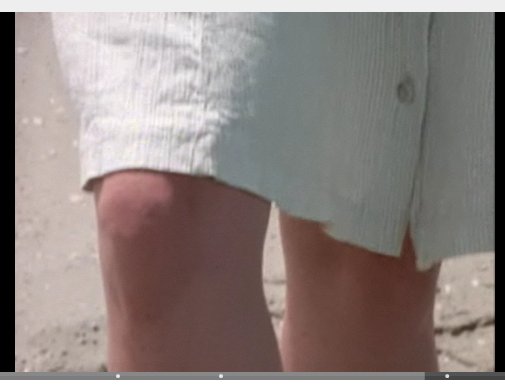
The ad contains outlets labeled Wife, Partner, Soul Mate, Confidant, Spouse, Friend, Better Half, Companion, Cover Up, Concubine, Servant, Punching Bag, Vagina. A plug is in the outlet labeled Vagina. The text nearby says, “How some men think of women.” Then it says in smaller letters, “If you are a victim of abuse, please report to Hotline number 603 2143 3361 and we will help. Kabayanihan.”
Where do I begin detailing the stupid, sexist, reductionist attitudes operating in this ad? First of all, let’s start with the symbolism of plugs and outlets. While the women are represented by white outlets of pure vacuity, the man is represented by a black plug. As something that can fill up holes, a plug is an aggressive phallic object. The black color connotes that its power is a negative, dangerous one. This is actually not a bad symbol for the sort of domineering, sexually aggressive man who is assumed to be battering the female consumers of this ad.
While the man=black plug equation works well, the symbolism for women in this ad is problematic. Women are represented as white outlets. Outlets are holes that wait on the wall for something to be stuck into them, or, in other words, to be used. The symbolism of the outlet implies that women are passive, exploitable victims, even if they are held in esteem by men as Friend or Better Half. The color white also brings to mind purity, innocence and emptiness, which makes women not only actionless and limp, but also blank and lacking in substance. So, basically, according to this ad, women are full of negative connotations.
You could argue that it is only the male abuser sees women as white outlets full of negative connotations, but that’s not precisely what the ad says. Remember that the ad text states that it is showing how “some men” perceive women. “Some men” think that women are just Vaginas. But, the ad implies, there are other ways for men to perceive women, as indicated by the alternative white outlets. However, please notice how the whole grouping of outlets is NOT a subset of a wall containing a myriad of outlets including Sister, Mother, Grandmother, Aunt, Cousin, Acquaintance, Role Model, Goddess, Fag Hag, Medium, Dominatrix, Object, Pest, Earth Mother, Bluestocking, Dyke, etc., etc. The whole grouping of outlets is neatly centered in the photo, arranged so that it forms a discrete, total, complete set. The ad, in effect, says that these 14 ways are the only ways in which men can perceive women. So, to get back to my topic sentence, it’s not just the male abuser’s view that women are a yawning void of quiescent, dependent boringness; it’s ALL men’s views of women. Even the perspective labeled Confidant is still, yes, a white outlet, meaning that even the more positive views of women in this ad are contaminated by the demeaning, infantilizing symbolism.
The underlying structures of this ad are bad enough, but even the surface messages are blatantly misleading, overly specific, confusing and just plain wrong. For example, the fact that there is just one plug in the Vagina outlet suggests that ONLY those men who see women as Vaginas abuse women. Also, the fact that the plug is in the Vagina outlet, denoting a sexual orifice, defines sexual abuse as the only type of abuse extant. First, men who see women as Concubines and Cover Ups and, yes, even Wives, also abuse women. Second, there are more types of abuse than just sexual abuse. Am I the only one who is revolted by the casual use of the term Punching Bag in this ad? The fact that the Punching Bag outlet does NOT have a plug in it seems to imply that men who see women as Punching Bags, that is, men who hit women, do not abuse women, since abuse, according to this ad, does not include hitting. This ad has an extremely narrow focus that seems to exclude verbal abuse, emotional manipulation, assault and other forms of abuse besides sexual, not to mention abuse of wives, friends, friends, prostitutes [Concubines], children, elders, basically any woman who is not listed among the outlets. What kind of abuse is this ad thinking of, then? The kind where a stranger attacks and rapes an unknown woman? Such cases form a statistically small percentage of abuse cases. You are much more likely to be abused by someone you know, a relative, friend or acquaintance. Nowhere does the ad accommodate this brutal reality.
Imagine the effect of this ad on the target population: a woman who has been abused. I can envision a woman whose husband jealously controls her phone calls, yells at her when she burns toast and hasn’t had sex with her in two years because he’s been having affairs. This woman is in an abusive situation, but it is quite possible that, thanks to this stupid and confusing ad, she might not call Kabayanihan to get the help that she desperately needs. The ad is clearly talking about men who sexually objectify women as Vaginas, but our hypothetical viewer doesn’t think that designation applies to her, first, because she’s obviously a Wife and, second, because her husband has not had sex with her in two years. Also, because the ad speaks of “men” in general as the perpetrators, when in reality the perp is usually a friend or relation [thus the violence could more properly be called “domestic”], the hypothetical viewer may feel she is excluded because the ad is talking about strangers, not family members. The viewer hurries to return home, where her husband throws an empty beer bottle, hitting her in the head, because she was five minutes late setting the table. And another misguided ad campaign fails to reach out to the very people it’s trying to help. In fact, you could even make a case for this ad being potentially alienating, rather than inclusive.
What’s really sickening about this whole business is that this is an ad for ANTI-abuse services. The help promised by this ad is supposed to empower women [I assume] to cope with the aftermath of abusive trauma and leave abusive situations if they are stuck in them. But instead it’s just a further depressing reminder of how limiting male conceptions of women can be, how invisible domestic violence is and how helpless many women [whether they are abused or not] feel in a world where the threat of male violence against them is almost constant.






http://www.hundland.com/scripts/LegendOf
Enjoy!
The Rampant Bicyclist"
I don't even know where to begin with this one. Besides being 400 hours long, it's also a slag heap of cliches that are so overworn that they turn into stereotypes. And the sexual politics are PUTRID. Lili, the princess, is seen as a good character only when she is a pure, innocent virgin. The appearance of her sexuality [in a fascinating transformation and rape scene with the Baron, a precursor to Darkness] coincides with her turn toward evil. The revulsion towards women as active, sexual, desiring individuals just emanates from the page.
Go read it!